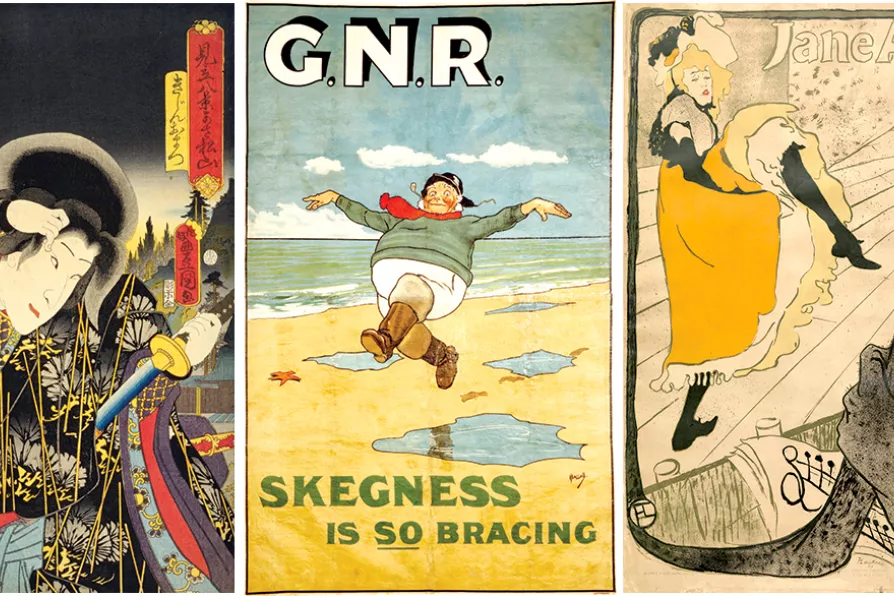LEO BOIX, ANDY HEDGECOCK and MARIA DUARTE review Dreamers, It Was Just An Accident, Folktales, and Eternity
Hassall, Lautrec and the true roots of toons
Star cartoonist MALC McGOOKIN introduces two commercial artists beloved by cartoonists and comic artists the world over

 (L to R) Utagawa Kunisada, The Female Bandit Kijin no Omatsu, 1851; John Hassall, Skegness is So Bracing poster for GNR (Great Northern Railway), 1908; Henri Toulouse-Lautrec, Jane Avril, 1893
[piccredit: (L to R) National Diet Library/Public domain - Science Museum Group Collection/Public domain - Public domain]
(L to R) Utagawa Kunisada, The Female Bandit Kijin no Omatsu, 1851; John Hassall, Skegness is So Bracing poster for GNR (Great Northern Railway), 1908; Henri Toulouse-Lautrec, Jane Avril, 1893
[piccredit: (L to R) National Diet Library/Public domain - Science Museum Group Collection/Public domain - Public domain]
I WAS prompted to write this article after I’d offered up a cartoon satirizing both Nigel Farage and Clacton, a seaside town which has offered welcoming berths for Tories, knights and baronet MPs since 1604, including the wonderfully named Sir Nathaniel Rich and Sir Harbottle Grimston.
Farage is merely the latest carpetbagging Europhobe to shoehorn himself into the seat, although there was, admittedly, a WTF moment in 1997 when Labour’s Ivan Henderson got over the line.
The cartoon in question satirised the great John Hassall’s famous “Skegness Is SO Bracing” poster.
Similar stories

PETER LAZENBY is fascinated by a book of cartoons that shows how newspaper cartoonists were employed to, on the one hand, denigrade and, on the other, to defend the miners’ strike of 1984-85

WILL STONE relishes a refreshingly irreverent raconteur's record on politics at the turn of the millennium

TOMASZ PIERSCIONEK relishes a collection of cartoons that focus on Palestine from the period 1917 to 1948











